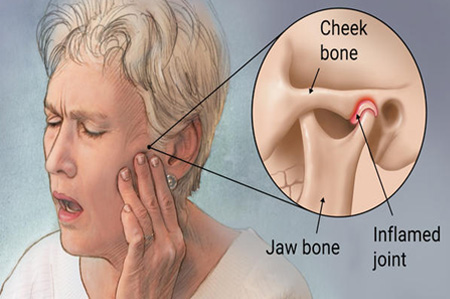Temporomandibular Disorder

Temporomandibular joint dysfunction (TMD, TMJD) is an umbrella term covering pain and dysfunction of the muscles of mastication (the muscles that move the jaw) and the temporomandibular joints (the joints which connect the mandible to the skull).
The most important feature is pain, followed by restricted mandibular movement,and noises from the temporomandibular joints (TMJ) during jaw movement.
TMDs are broadly divided into two major groups
Clinical Presentation
The most common symptom of TMD is muscle pain. It is usually accompanied by restricted movement. Patients often present with reduced jaw opening, as well as impaired range of motion in the cervical vertebrae, shoulders, and arms.
Other commonly associated symptoms of TMD are listed below
Headache.
Ear Symptoms.
Pain, stuffiness, and tinnitus
Clicking.
Grating Sounds.

Locking of the Joint
The patient perceives this restriction as an inability to open the mouth fully
Neck Pain.
Neck stiffness and pain are commonly part of the TMD
Treatments
Pharmacotherapy
Local anesthetics
Local anesthetics are primarily used when a myofascial trigger point is present.
TMJ injections
Intracapsular injection of corticosteroids significantly reduces TMJ pain It is indicated for acute and painful arthritic TMJ
Autologous blood injection effective for TMD